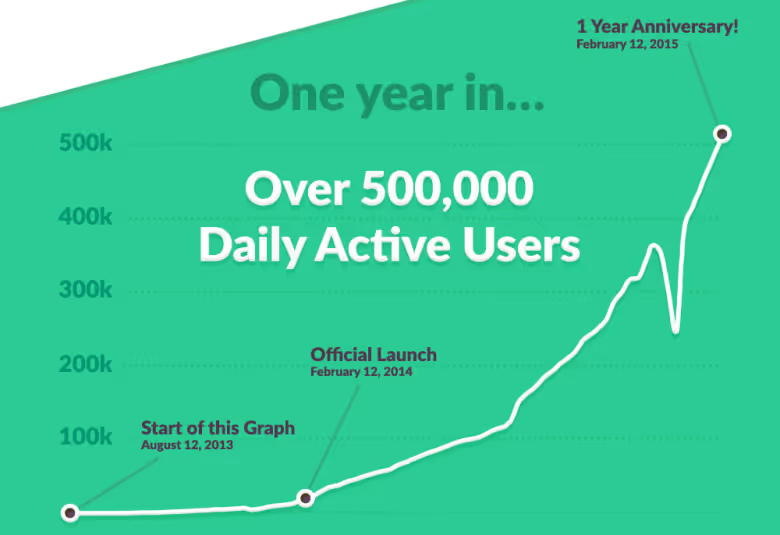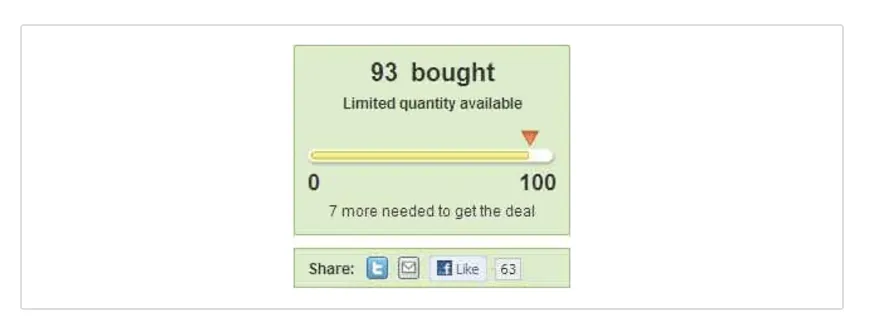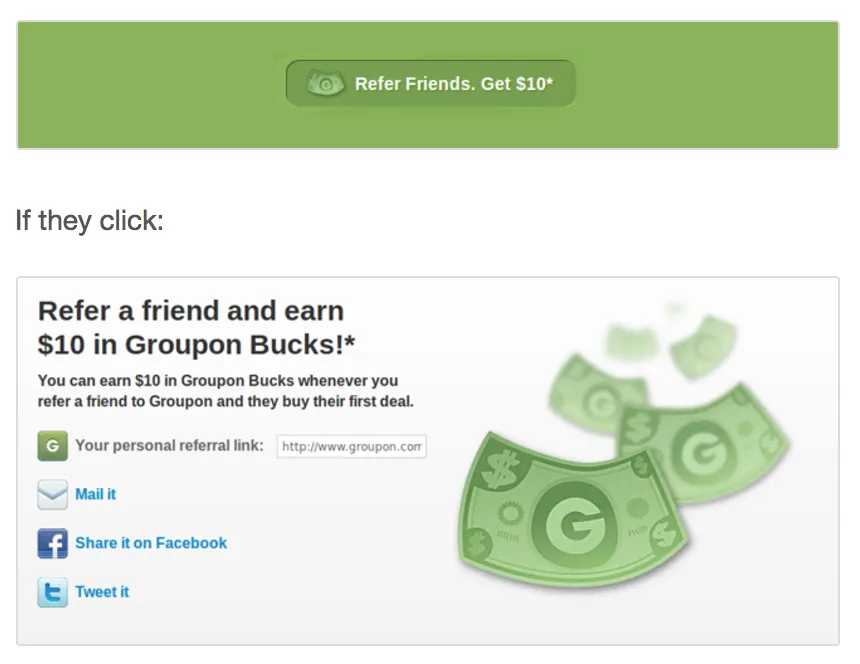Growth Hacking vs. Growth Marketing
Lots of Englishmen move from dreary ol’ England to warmer climates. However, none but one of these expats has ever become the most notorious and celebrated pirate in all history.
Meet Edward Teach. He’s just relocated to Jamaica with his family and begun working as a shiphand in the nearby port. He’s really loving it. The warm breeze on his face is pleasant and his sea legs are sturdy.
After enlisting in the Royal Navy, he sails through the Queen Anne’s War of 1716 without a scrape. After a few more years, he becomes a privateer and gets a taste for obtaining pricey mercantile goods via irregular means.
Within the next year, Teach commits numerous acts of piracy. The taste of plunder suits him nicely. Soon he’s overtaken a massive vessel of his own, renamed it the Queen Anne’s Revenge, and outfitted it with 40 cannons and guns.
He and his crew are the scourge of the English Navy and seafaring merchants for years. Now a man, Teach sports a massive beard and an overall fearsome appearance (he’s rumored to light cannon fuses from his captain’s cap during raids on unfortunate ships).
Today we know this historical buccaneer as Blackbeard the Pirate. You may recall Johnny Depp’s character in Pirates of the Caribbean?
Yep, same guy. And like Jack Sparrow, Blackbeard was - gasp - a peaceful pirate. His crews all served voluntarily under his renowned leadership and he never once took a life, preferring intimidation tactics to force.
Cool pirate story, right?
Here’s the turn: growth hackers have much in common with Blackbeard the Pirate. Both use unconventional tactics to achieve their goals, both are rapidly effective, and no one gets hurt. Quite the opposite: loot! As marketers, our job is to captain our brands to growth. And growth hacks are like pirate tactics for those who choose to accept it.
Today we’re start off by defining the differences between growth hacking and growth marketing. These terms have been floating around for some time now, and since both are effective models, they deserve some clarification before being put to good use.
I'll also introduce you to growth automation, the analytics framework pirate metrics and show you a process for using these strategies at your own company.
Ultimately, our discussion will center around how to create and align customer-centric initiatives that focus on customer retention, growth, and high customer lifetime value.
Shiver me timbers, let’s start already!
What is Growth Marketing?
Growth marketing is the practice of building campaigns and tactics that improve the entire customer lifecycle. Moving beyond traditional marketing metrics around Awareness and Acquisition they are also focused on technical projects deeper in the customer experience that improve Product Onboarding Flows, Viral Loops and Pricing Plans.
Here’s some stats to help you out:
- If a typical SaaS business loses 2-3% of their customers each month to churn, they must grow by at least 27%-43% annually to maintain the same revenue. (Source)
- 79% of leads never convert into sales due to poor performance, nurturing, and/or engagement. (Source)
- Reducing churn rate by 5% can increase profitability between 25-125%. (Source)
- Existing customers are 50% more likely to try new products and spend 31% more when compared to new customers. (Source)
- Loyal customers are worth up to 10x as much as their first purchase, on average. (Source)
- The lifetime value of a referred customer is 16% higher – Wharton School of Business (Source)
“Growth” itself can be understood as a fusion of marketing, product, and engineering. This blended concept becomes important when we consider that growth marketing - unlike other marketing strategies - focuses upon the entire funnel rather than just the top.
Thus, having not only marketing tactics, but product developments, and engineering savvy on your side enhances your ability to affect change throughout the entire funnel with a diverse array of activities.
For example, you could release a new product feature to attract growth. Or better optimize your customer experience with improvements to retain more users and encourage sharing. At the core, growth marketing means taking a step back and considering your full funnel and being selective and streamlined about how you appeal to your best customers.
Sean Ellis and Brian Balfour have long championed the growth marketing movement, and both endorse “high tempo testing” - a methodology of launching new experiments regularly and at a high frequency to quickly determine winning initiatives.
To do this set a goal, then brainstorm how to accomplish the goal, predict an outcome, measure the outcome and change your course depending upon the results.

(Source)
Slack’s meteoric growth testifies to growth marketing done well. Having found a pain point in team communication and collaboration, the platform focused upon delivering its users a total relief pain pill in the form of a replacing work emails. The company started by inviting a few thousand to try but now boasts 2 million worldwide users and 500,000 active subscribers.
Yes, Slack shows us that delivering an experience that users want - nay, crave - is a surefire way to see massive growth. This highlights how product and customer experience retains users on value alone.
Probe your own funnel to follow Slack’s lead. Identify your top channels and then assess how these impact the top, middle, and bottom of the funnel experience. Where are your weaknesses in customer experience?
Is it in the middle funnel where lead nurturing falls short? Is better customer support during trial onboarding?
Focusing on bottom of the funnel activity like customer advocacy and loyalty programs can increase revenue per customer. Growth requires an overarching perspective that truly rewards customers as they move throughout the funnel.
What are Pirate Metrics?
Yohoho and a bottle of rum is not what Pirate Metrics is about, fun as that might be.
This analytical framework was created by Dave McClure to categorize key KPIs and metrics within the customer lifecycle. The name derives from the acronym “AAARRR” to discuss ways in which companies can improve the customer lifecycle.
The model is broken down into these 5 customer lifecycle stages - Acquisition, Activation, Revenue, Retention, and Referrals. This model complements growth marketing in that it provides a holistic way of looking at the full funnel as a function of growth.
Acquisition - Land ho! This is first contact with your brand, be it a free trial or a free download. Prioritizing quality lead sourcing is essential, but the next step is to segment users into engaged and ‘otherwise’; newsletter signups don’t signal the same level of engagement as a trial signup, right? Look to new leads, email subscribers, downloads, and product sales as your metrics.
Activation - Huzzah, people are using your product! Now’s the time to make it as WOW-ing as possible with automated campaigns to keep them around. Metrics to watch: trial conversion rates, user activity and repeat purchases.
Retention - This is the amount of incremental value you’ll gain from the customer. Time to think of cross-sells and upsells, but also about improving the customer experience after the first sale. Monitoring churn rates and CLV is important. Use product emails, visitor retargeting and push notifications with post-sale coupons to reactivate customers.
Revenue - You’ve been paid yet the work’s only halfway done. Users grasp your value, but you need to preserve this good feeling to retain them. Use client data inform how best to develop your relationship, be it with automated campaigns focused on plan or cart upsells and product recommendations. Keep an eye on revenue per campaign and customer churn in this area.
Referral - Customers like your offering enough to tell their friends. This closes the full funnel loop and reinject awareness into the growth loop, so facilitate and optimize for sharing. Social shares, referral rates, product reviews, net promoter surveys - these metrics all feed into your referral campaigns.
What is Growth Hacking?
Growth hacking is using analytical thinking with creative strategies and tactics to drive company growth.
You know growth hacking when you see it, yet it’s hard to define. If it makes you go, “Oh, that’s clever” - odds are, it’s a hack. For example, when Airbnb tapped Craigslist to email promotions to people posting temporary apartment rentals. Hack attack.
Growth hackers are marketers like you and I - just with a different set of challenges and tools. I’ve pronounced them pirates, but you can think of them as part programmer, part creative, part analyst, part subversive who’s interested in outside the box growth schemes.
They set objectives, run an experiment, gauge the effects, and move quickly towards new objectives in order to uncover the real growth options. And they’re unafraid to try new things.
“You’d probably have a lot of the same types of roles you see in traditional teams,” Sean said. “Those would include copywriters, analysts, designers, but you’d also want to add some development skills for deeper funnel optimization and growth (i.e. viral) feature development.” -- Sean Ellis, Growthhackers.com

(Source)
If you’ve been on Groupon recently, you’ll recognize this. The coupon company uses growth thinking throughout their brand experience, just as show in this photo from their “Featured Deal” page.
Already a social product, Groupon customers can share their coupons with others in order to unlock premier deals. This twist on social proof and referral marketing uses consumer psychology such as exclusivity, scarcity, and altruism to influence purchasing behavior. Hacks like this helped steer Groupon to a $12.7 billion IPO and 228% growth in one year.

(Source)
But Groupon doesn’t stop there. It costs Groupon $10 per person to run their referral campaign. The referral program is integrated with popular share mediums Facebook, Email and Twitter to give customers an easy way to share the deal.
What’s a Process for Growth Hacking?
#1 Define Actionable Goals
Set goals that are concrete and measurable. If you’re looking for more active users, more email subscribers, or a higher revenue per customer - choose a goal and stick with it. Example: increase sales by 15% in 3 months.
#2 Experiment within Your Network
You’re going to be running experiments in a given period of time to gauge effectiveness, so be sure to approach each campaign and customer touchpoint so you make the biggest impact.
#3 A/B Test
Set a goal, run the experiment, and check the data after the given time period. A willingness to dive into data across any customer segment is what really gives growth hackers power, so be relentless and fearless in your pursuit of outcomes. And if something doesn’t work, move on to the next experiment.
What is Growth Automation?
Growth automation is any campaign that full funnel marketers use to increase customer lifetime value.
Whether we're designing an acquisition campaign to get more first time visitors or creating a special offer to encourage repeat purchases. Growth marketers are looking to help their company with structured campaigns that impact the bottom line.
For example, we look can look to campaigns that:
- Send offers to trial signups to convert them to paid users
- Increase WOW! moments during onboarding
- Reduce subscriber churn with cancellation offers
- Promote customer advocacy with refer a friend campaigns
The idea is that if a growth marketer can design campaigns across the entire customer lifecycle they're able to deliver measurable company growth.
Setting Sail
Pirate metaphors aside, by now now you should have a grasp on what separates growth marketing from growth hacking. Whether you’re looking to get a parrot for your shoulder and become a growth hacker yourself - or just expand your full funnel initiatives and emphasize customer experience - these strategies and tactics will help you achieve your goals.
Ask yourself: where are my funnel weaknesses? Where do users fall off and start to churn. Focus on these areas with larger growth automation campaigns and fix the gaps with little growth hacks wherever possible.